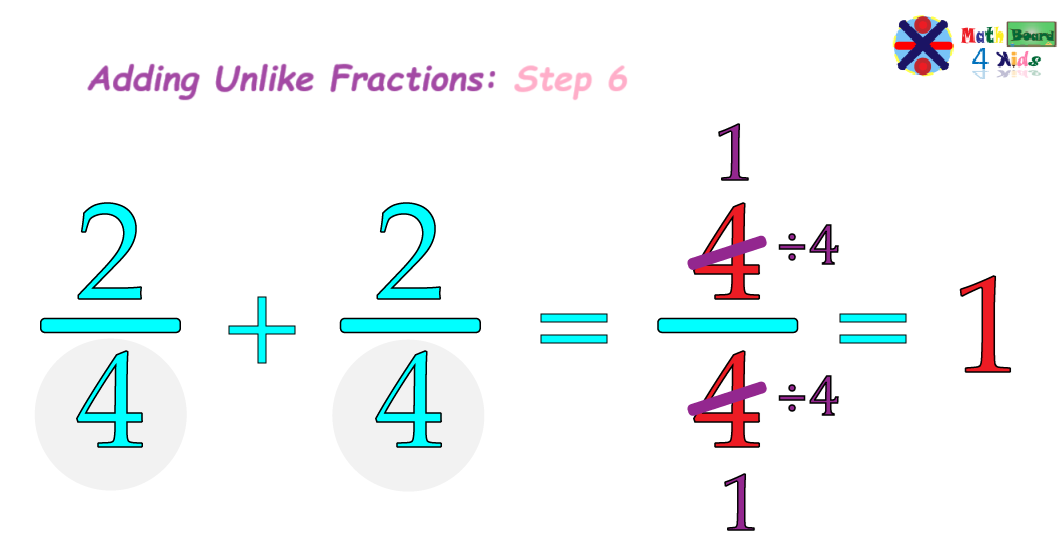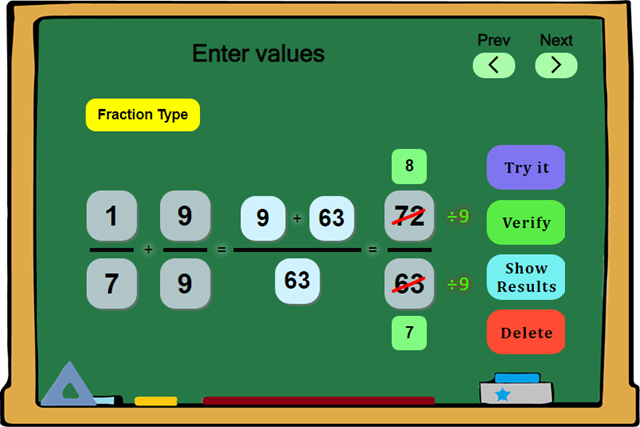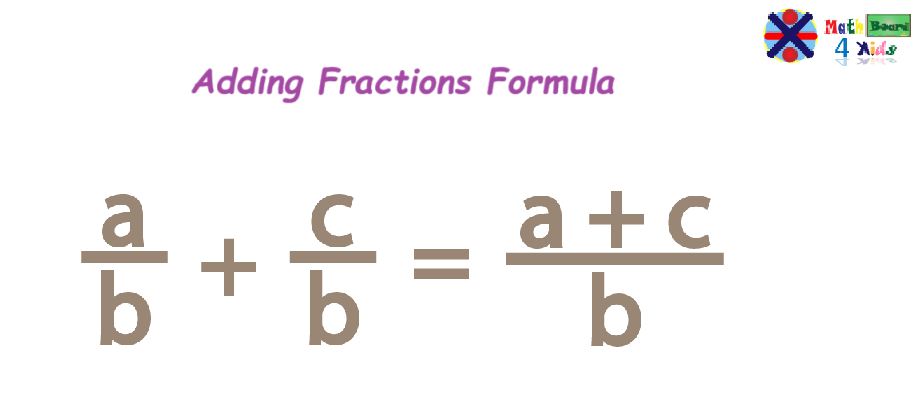
Remember a fraction is a way of representing parts of a whole, whether that whole is made up of objects or values. It involves dividing something into equal sections and showing how many of those sections are being considered or used.
When you add fractions, the process is all about combining parts of that whole.
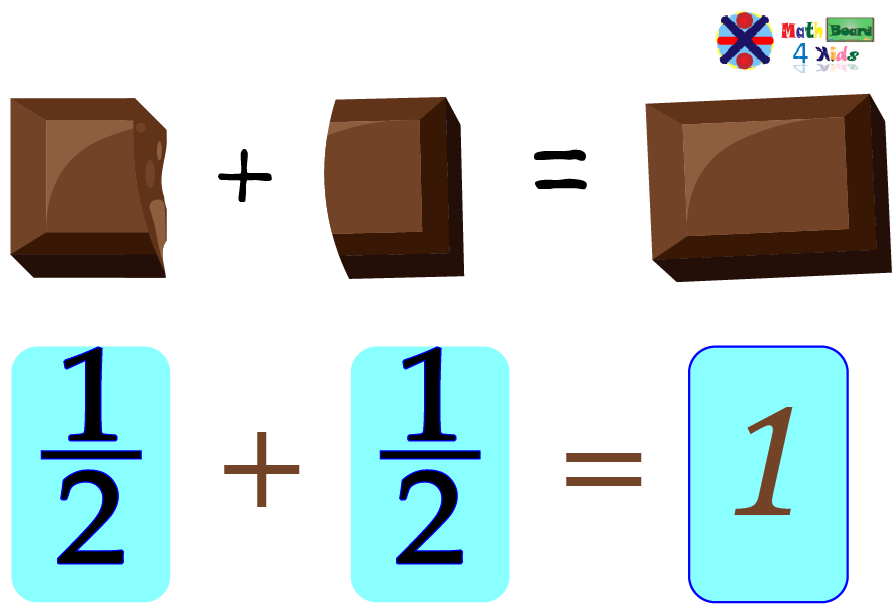
For the addition to work, the fractions must be the same size. This is where the idea of a common denominator becomes important.
A common denominator is a number that both denominators (the bottom numbers) of two or more fractions share. For example, ¼ + ¼.
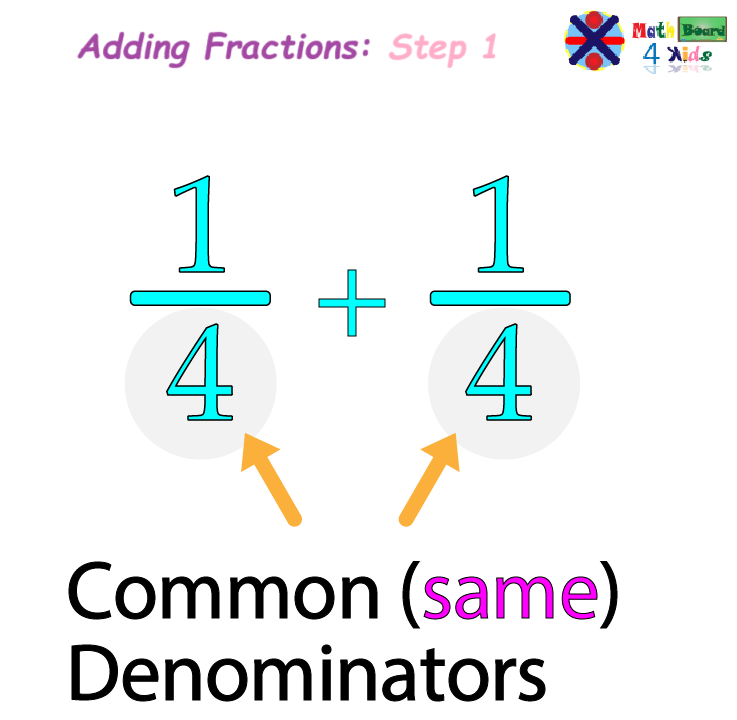
Since both fractions have the same denominator, we can simply add the numerators (the top numbers), and keep the denominators.
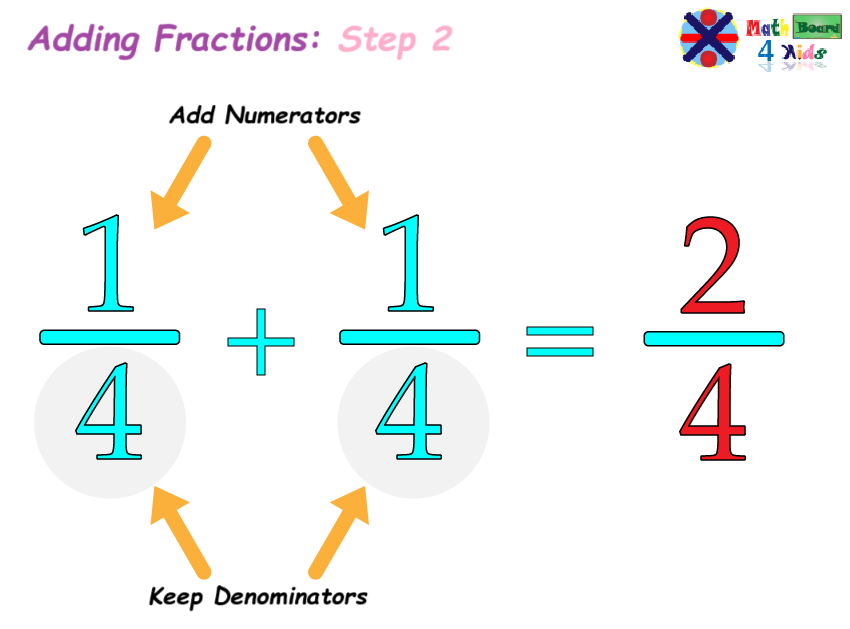
After adding the fractions, the next step is to check if the result can be simplified.
In order to simplify a fraction, we need to find the Greatest Common Factor (GCF), a number that helps make fractions simpler by reducing them to their smallest form.
The greatest common factor is the largest number that can evenly divide both the numerator and denominator of a fraction. For example, in the fraction 2/4, both the numerator and the denominator can be divided by 1 and 2.
Since 2 is the larger of these two numbers, we choose 2 as the greatest common factor and divide both the numerator and denominator by 2.
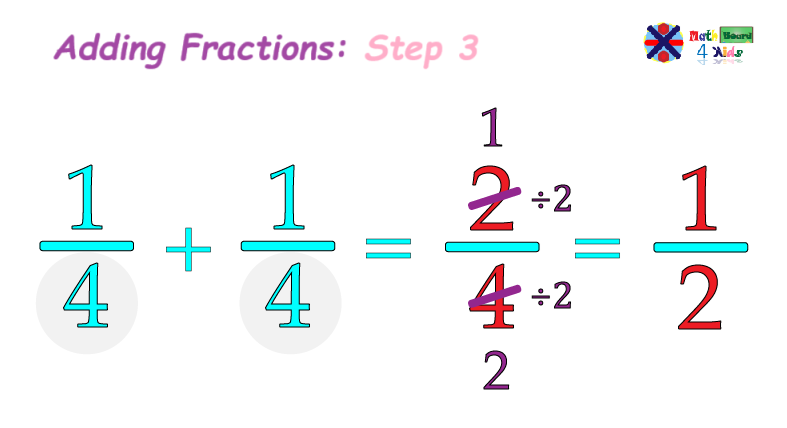
Unlike fractions are fractions that have different denominators, meaning the bottom numbers of the fractions are not the same.
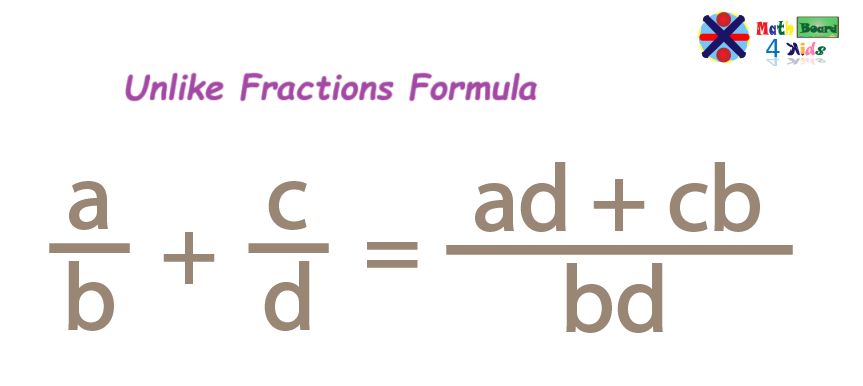
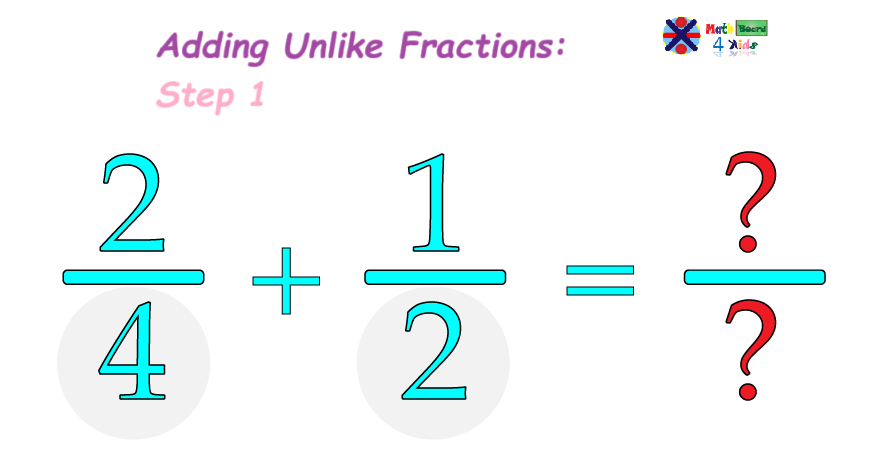
When adding or subtracting if we find unlike fractions, we need to find a common denominator before we can combine them.
We can find a common denominator by looking for the Least Common Denominator (LCD).
The Least Common Denominator (LCD) is the smallest number that both denominators can be used to divide evenly, without leaving any remainder. Let's find it!
To find the LCD easily, we need to list the multiples of each denominator — in this case, the multiples of 4 and 2. Then, identify the multiples both numbers have in common.
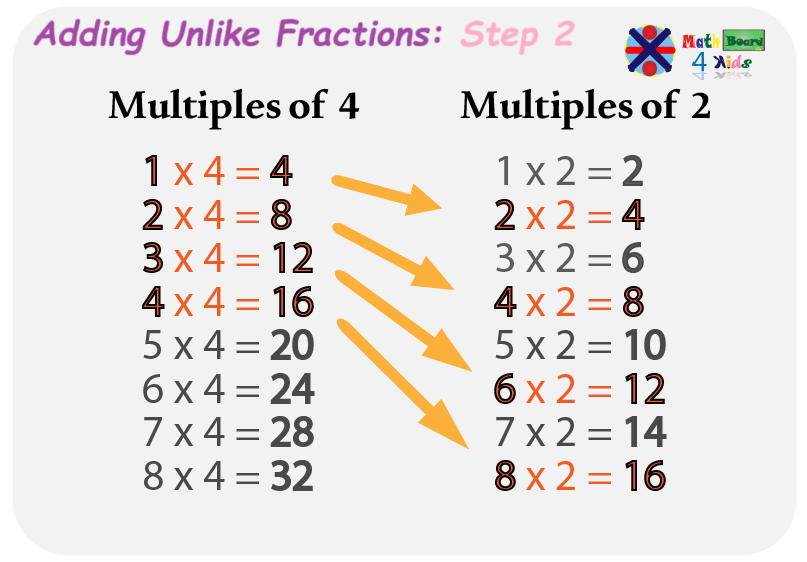
We've found the multiples that both numbers have in common:
Multiples of 4
4, 8, 12, 16, etc.
Multiples of 2
4, 8, 12, 16, etc.
After listing the multiples that 4 and 2 have in common, we see that the smallest number that appears in both lists is 4, so 4 is the LCD.
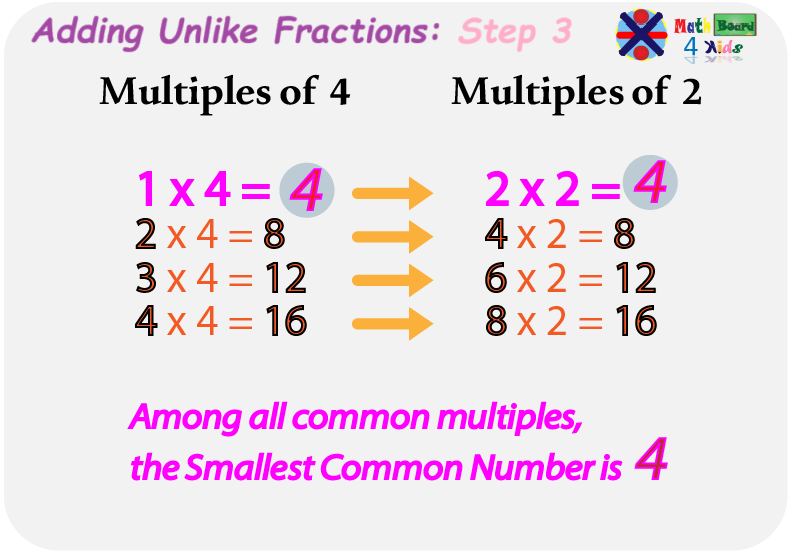
Once we've found the LCD which is 4, we need to rewrite both fractions so that they have the same denominator.
In this case, to make the denominators equal, we multiply the first denominator (4) by 1, to reach the LCD (4), and then we multiply the second denominator (2) by 2 to reach the same LCD (4).
We also have to multiply the first numerator (2) by 1, and the second second numerator (1) by 2 to make both fractions equivalent.
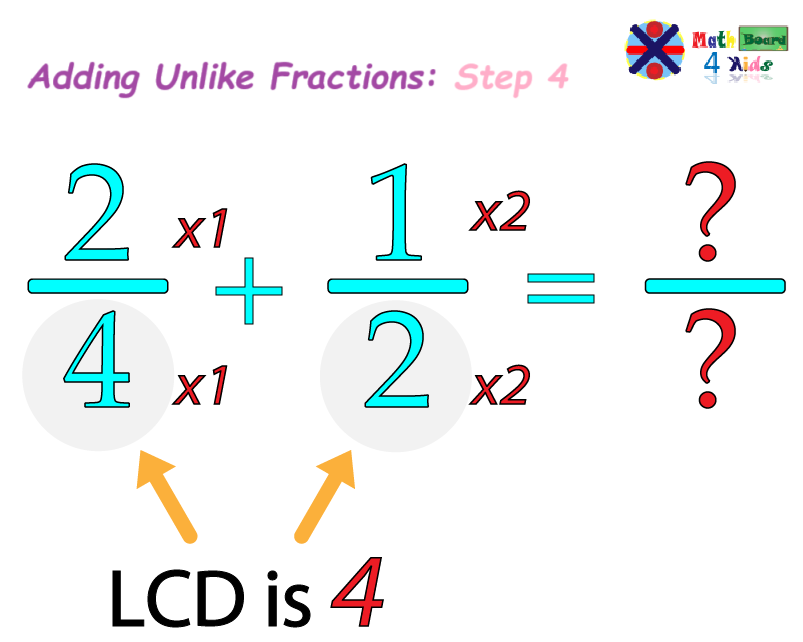
After multiplying both denominators to get the LCD and the numerators to make the fractions equivalent, we can rewrite the fractions with the new numerators and denominators.
Then, we solve the fraction by adding the numerators and keeping the common denominator.

Let's remember that the Greatest Common Factor (GCF) is the largest number that can evenly divide both the numerator and denominator of a fraction. For example, in the fraction 4/4, both the numerator and the denominator can be divided by 1, 2 and 4.
Since 4 is the largest of these three numbers, we choose 4 as the greatest common factor and divide
both the numerator and denominator by 4.
When we divide both the numerator and denominator by 4 we get 1/1, which can be just 1.
